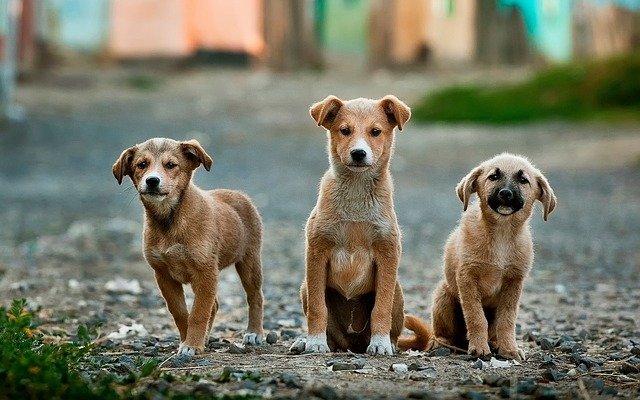Inbreeding of dogs is just one of those things that spark a lot of debates in canine circles.
There are those that believe it is beneficial—that it is a method by which perfect traits can be produced.
On the contrary, the practice can also cause problems down the line.
Alongside receiving deleterious alleles, a dog can also get severe medical conditions. His life may be utterly shortened in the process. No pet owner is ready to deal with that.
If you are wondering which dog breeds are the most inbred, we’ve prepared a conservative list for you.
Before then, let’s learn a few basics…
What Is Inbreeding?
Essentially, inbreeding is mating together two relative dogs to produce offspring. This can be two siblings, mother and son, or father and daughter mating.
The main purpose of this kind of breeding was to develop and improve the quality of breed bloodline.
It is understandable that early breed development required inbreeding to a given extent. Today, however, the act has no significant purpose.
So, Why Is Inbreeding Still Carried Out?
It boils down to breed standard obsession. Breeders are interested in getting the best breeding standards in their dogs.
If a dog breed shows a given perfection, some breeders get tempted to encourage perfection by breeding the dog with close relatives that share the same qualities.
It is even a bonus to breeders if the breed can do well in show rings. In such cases, breeders rush to mate breed champions within the bloodlines so as to keep more champions within the same bloodline—which gives a better pedigree for upcoming litters.
In a nutshell, today’s breeders opt for inbreeding to ‘breed in’ desirable traits and “breed out” bad qualities.
Inbreeding Problems
While some reasons behind inbreeding are understandable, the process comes with real consequences.
Past studies have shown that inbreeding in dogs can lead to a host of health issues, including a 6% reduction in adult sizes, a 6-10 month reduction in lifespan, and an overall reduction of litter size and fertility.
All these come about due to gene mutation. See, every purebred dog population has a host of rare recessive mutations that were either present in their founding population or arose in their population afterward.
These kinds of mutations are seldom problematic if such dogs are outbred considering that the offsprings will always at least inherit one working/good copy.
But the same mutations can be a big issue if closely related dogs are bred—there are high chances of passing two bad copies to the offsprings.
Sadly, Many Breeds Are Now Highly Inbred
Despite the fact that inbreeding comes with a lot of health risks, many dogs are still highly inbred.
A past genetic analysis of 227 breeds (carried out by Dr. Danika Bannasch and colleagues) found an average breeding rate of 25%. This is more or less the same as sharing similar genetic materials with a full sibling.
These levels are considered to be above what’s permissible for both wild animals and human populations.
For instance, in humans, inbreeding levels of 3-6% are often associated with increased rates of complex health conditions.
Some Dog Breeds Are More Inbred
We will be highlighting dog breeds that are most inbred. So, why are some dog breeds highly inbred than others?
Well, there are two main reasons: desire for specific traits and a small original population.
- The desire for Specific Traits: we’ve covered this slightly in our previous paragraphs. Some breeders are obsessed with inbreeding some dog breeds to get certain desired traits.
- Small Original Population: Dogs with smaller founding populations have also been linked to high levels of inbreeding than their counterparts with larger original populations. The latter had wider genetic variation.
Most Inbred Dogs
1. Norwegian Lundehund
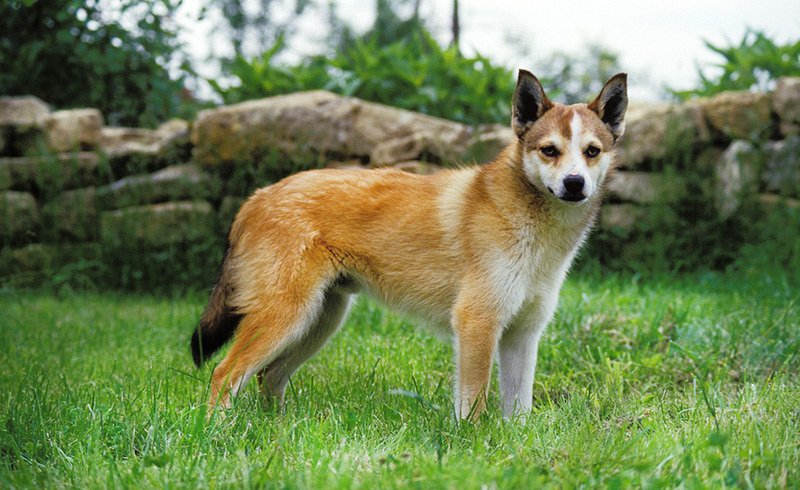
The Norwegian Lundehund is by far the most affected breed as far as inbreeding is concerned.
Back in the 16th century, this breed was forced to live in a remote Norway town after the ugly puffing hunting era.
A distemper outbreak in the World War II era reduced the breed population to only 50.
A further outbreak brought down that number to only 6 (a female dog and her five puppies). This means that all the Norwegian Lundehunds that roam the land have descended from the same tree.
Without inbreeding, this breed would be totally extinct by now.
2. Pug
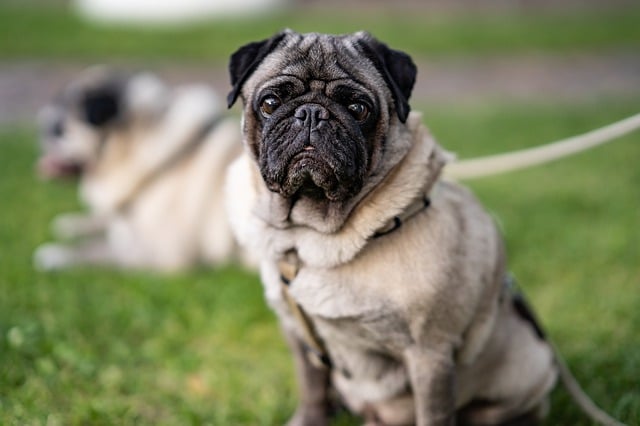
This sweet charming little canine also happens to be the victim of inbreeding.
It is not uncommon to come across a pug with a host of health issues. These include stomach problems, elongated soft pallets, knee disorders, and larynx collapses.
Sometimes the dog can have a squished face or eye problems.
In a bid to achieve a curled tail, breeders can also cause spinal issues that give the dog a weird posture.
Related Post: 12 Best Goggles for Pugs
3. English Bulldog
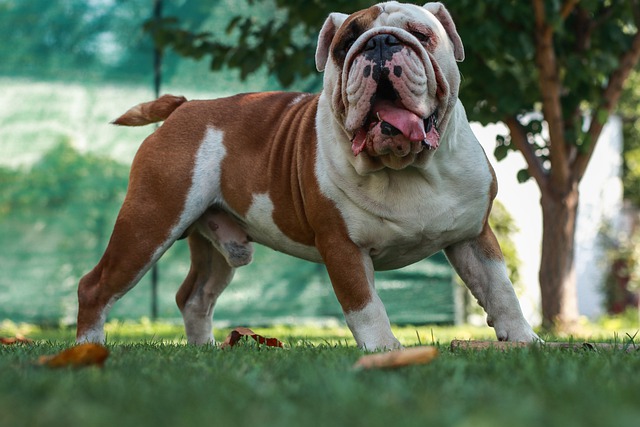
Modern bulldogs tend to struggle with the same health problems their pug cousins do. The modern dogs from this breed cannot compare with their strong and healthy ancestors.
Back in the day, this breed was known for fighting bulls. They would sink their teeth into the flesh of a massive bull without letting go.
However, modern bulldogs are weak and sick in every sense of the word. They are susceptible to inbreeding defects such as allergies, weight gain, and a host of skin infections.
4. Basset Hounds
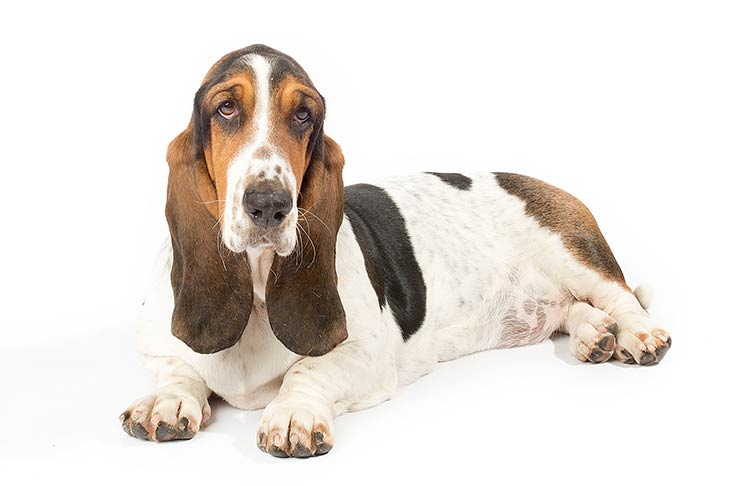
A basset hound is an affectionate and cute ball of fur. It is easy to fall in love with. Unfortunately, this breed is also another victim of inbreeding.
Most basset hounds have joint issues because of the weak gene that arises from mating siblings or parents and kids.
The other common issue is Von Willebrand – a deadly blood clotting issue that can affect the quality of life of the pup.
Before buying a puppy from a breeder, find out if there is any health issue of concern.
Fortunately, most of them can be treated permanently.
5. Golden Retriever
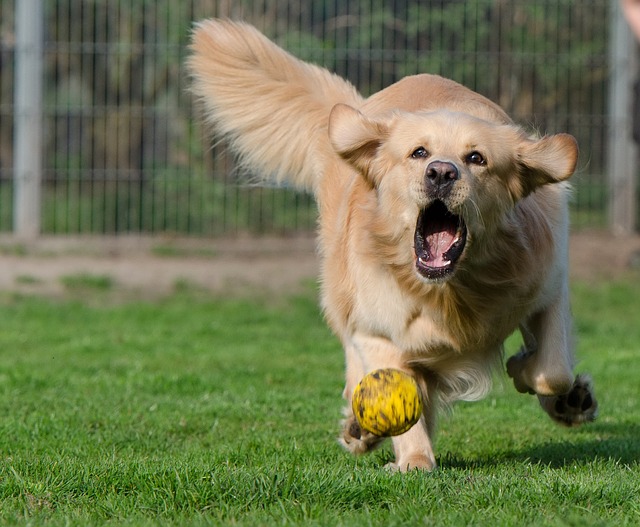
Inbreeding of golden retrievers was necessary to ensure that the integrity and purity of the breed were maintained. After all, these dogs have only been around for about 150 years only. Inbreeding was prevalent for this reason.
Sadly, breeders have overdone the practice over the years. They do this to get certain traits such as color, temperaments, and physique in the offspring.
In the process, the breed has been known to develop issues with the biggest one being cancer.
Prevalence is increased if the Goldie is exposed to environmental factors such as cigarette smoke and air pollution.
In addition, this breed is also prone to other ailments including canine hip dysplasia, skin diseases, and hemangiosarcoma.
6. Labrador Retriever
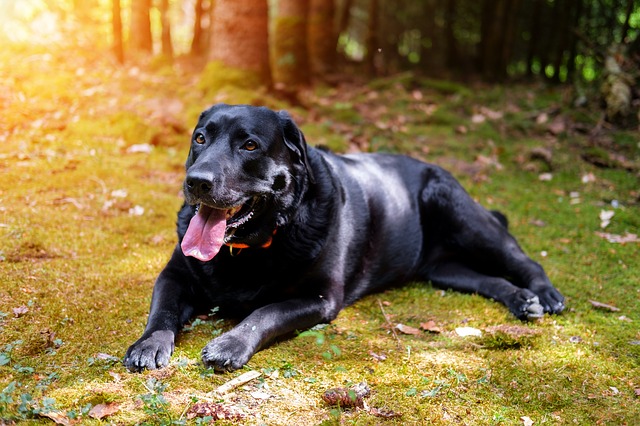
Like the Golden retriever, the Lab is also fairly modern. Their popularity grew fast in the early 80s which is a meager 5 decades back. Now, almost all homes in America have a lab as part of the family.
According to AKC, the inbreeding coefficient of this breed is 6.5. This is quite high compared to other breeds out there.
Ideally, the lower the number, the lower the chance of inbreeding.
Some of the negative consequences of inbreeding labs include weight gain. They can pack on the pounds if fed the wrong diet or exercised less.
7. Boxer
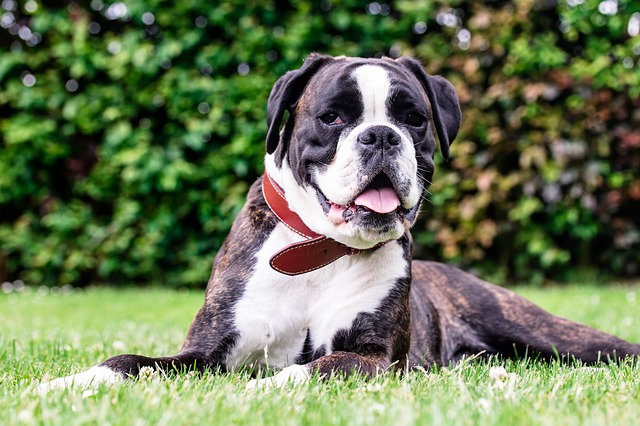
The boxer is a fun-loving, bright, and super active dog. AKC ranks it at number 11 out of 197 in terms of popularity. It is no doubt a beloved dog breed.
While most boxers are muscular and square-jawed, there are a few that bear a weak and abnormal physique as a result of inbreeding.
Boxers are victims of cancers, mast cell tumors, and lymphoma.
If you are getting a purebred mutt, it is in your best interest to find out if they were inbred or not. This helps you know what to expect and how to care for them better.
8. Springer Spaniel
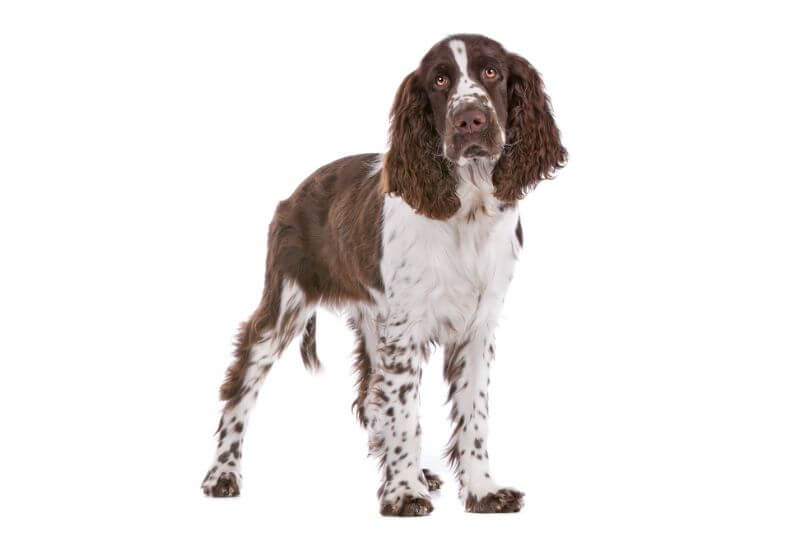
Ever came across a weird-looking Springer Spaniel that caused your jaws to drop in bewilderment? Perhaps he had a squished face, a curved spinal cord, a bizarre walking style, or any other defect. That could very well be the result of inbreeding.
Apparently, breeders also love to experiment with Springer spaniels.
Sometimes, the consequences are great: better color, temperaments, and physical features.
On the contrary, the dog may suffer unwanted health complications such as ear infections (thanks to their long ears), elbow dysplasia, and hip dysplasia.
Birth defects among littermates are also pretty common.
9. Rhodesian Ridgeback
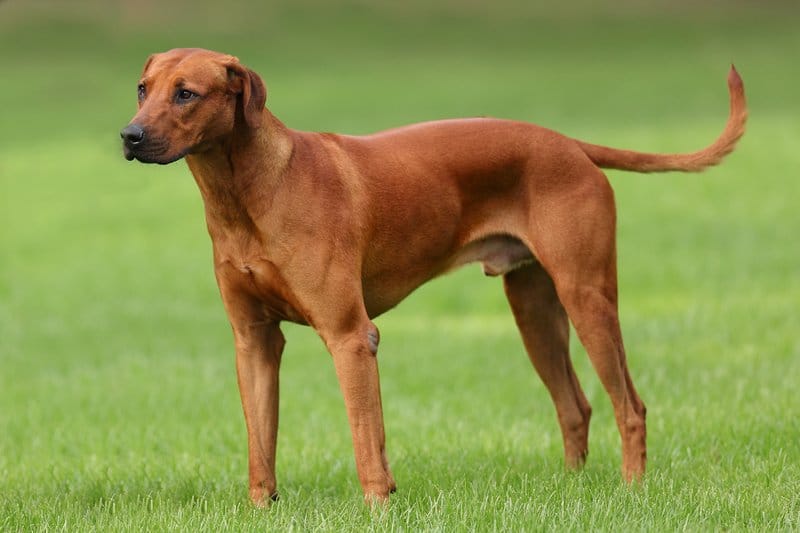
The Rhodesian ridgeback, also known as the African lion dog, is a beautiful short-haired breed with an equally beautiful soul.
Because of his hunting responsibility, he has a strong muscular physique. He is unfortunately a target of inbreeding or line breeding to adjust some of the traits.
What almost always ends up happening is that the dog will develop health issues ranging from multiple types of cancer, reproductive problems, and early death.
10. Dachshund

Most people don’t know this but original Dachshunds had longer legs. Granted, they weren’t as long as those of a German shepherd or the Doberman pinscher but they weren’t as short as they are today.
The modern ones have their stomachs down to the grounds, thanks to their super short feet.
Regrettably, everything points to inbreeding as the number one cause for this.
By mating members of the same family, there’s a lack of genetic variation. The genetic pool becomes so weak that things like spinal and joint disorders are almost inevitable.
Inbred Dachshunds suffer from back injuries, paralysis, and death.
Intervertebral Disk Disease has sent many dogs of this breed to the vet on an annual basis.
Related Posts:
Pros and Cons of Owning A Dachshund Terrier Mix
Pros and Cons of Owning a Dapple Dachshund
10 Facts You Probably Didn’t Know About Crusoe the Celebrity Dachshund
11. German Shepherd
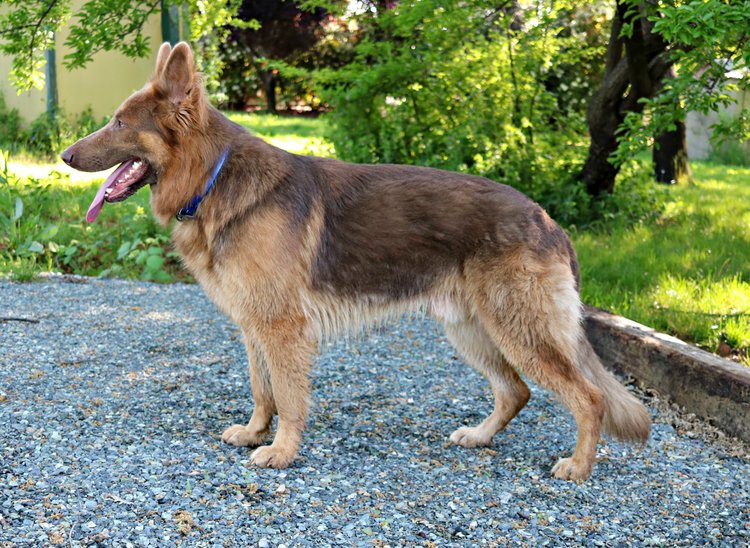
The German shepherd dog or GSD is an all-rounded dog breed.
He can sniff out drugs and mines, support the sick and elderly, fight alongside men and women in uniform, guard the home, or just enjoy being a pet. GSDs are also among inbred dogs all over the world.
Expectedly, the results are always glaring—genetic defects in puppies, hip dysplasia, and more.
Once in a while, line breeding causes characterological issues with the common one being excessive aggression.
Related Posts:
The ABCs of Owning a Liver German Shepherd: 10 FAQs Answered
A Guide to Owning a German Shepherd Akita Corgi Mix
12. Beagle

Last but not least, the laidback and delightful beagle just so happens to be a target of line breeding as well.
Breeders are ever looking for dogs with certain traits. They want close resemblance, improved physical characteristics, and more.
While most of the time they achieve this, health issues almost always follow. This is why Beagles suffer from obesity, hypothyroidism, cherry eye, allergies, and epilepsy.
A few of them also have genetic defects and some litters don’t make it to see the light of day if very close relatives are mated.
Related Posts:
What’s The Way Forward?
First thing first, humans are to blame for any inbreeding issues that our furry friends may have.
Most dog breeds that you see today are products of rampant inbreeding done to achieve desired looks and demeanor.
So, what can we do to deal with the inbreeding menace?
Well, one of the most important steps we can take to preserve the genetic diversity and health of our canine friends is careful management of breeding populations.
This is possible through educating breeders, genetic screening, monitoring of inbreeding levels which are often propelled by direct genotyping technologies, and maintaining diversity in dog breeds with lower inbreeding levels.
Prospective dog parents also have a role to play. They should only choose healthier dog breeds, work with reputable breeders or get their pups from dog rescue agencies and local shelters.
Final Thoughts
There it is – the list of most inbred dog breeds.
Inbreeding was once a necessary evil especially when extinction loomed.
However, in the modern world where dogs are abundant, cross-breeding is highly encouraged.
Unfortunately, some breeders have become lazy buns and don’t want to be bothered with the hassle of looking for the appropriate dogs to breed with.
As usual, always chose reputable breeders when buying a purebred dog no matter the breed.
Related Posts:
As an Amazon Associate, we may receive a small commission from qualifying purchases but at no extra cost to you. Learn more. Amazon and the Amazon logo are trademarks of Amazon.com, Inc, or its affiliates.

